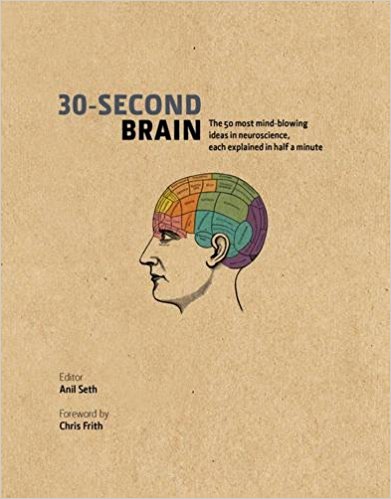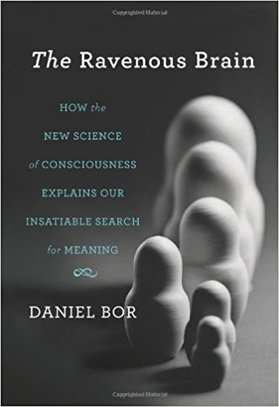Marina Dauphin
|
Enter the member's biography here.
Ideally it should be written in the first person. |
Current Research
My current main research focus is to determine what confers cognitive resilience in the ageing population and Alzheimer's disease (AD) patients. I am using various neuroimaging techniques on big data datasets to examine the neural basis of these effects in healthy control analogues and AD patients, and link them to the consciousness and arousal levels, primarily via neural complexity and frequency measures. The eventual aim is to help discover a pharmacological intervention that could boost cognitive resilience in such patients.
What a person consciously perceives is often shaped by environmental influences. However, the neural basis of perceptual plasticity relevant to conscious experiences remains very much open to exploration. Synesthesia is an ontogenetic variant of healthy human development accompanied by additional phenomenological experiences. Grapheme colour synaesthesia, for instance, involves consistent colours experienced onto achromatic letters or digits (e.g. ‘r’ always being perceived as red). Thus, training induced synaesthetic experiences offer an opportunity to study perceptual plasticity relevant to conscious experiences. We have previously demonstrated that it is indeed possible to train non-synaesthetic adults to acquire synaesthetic experiences. However, this was purely a behavioural result. Now we are exploring, via TMS and EEG, what additional neurophysiological components resembling genuine synaesthesia can be elicited by this kind of training. Simultaneously we hope to demonstrate dramatic neuroplasticity in this way, even in adults.
Publications
Popular Science Books
|
30-Second Brain: The 50 Most Mind-blowing Ideas in Neuroscience, Each Explained in Half a Minute
Are we all at the mercy of our brain chemistry? Do you think that the amygdala and the hippocampus are fantastical sea monsters? What can an MRI scan tell us? Could you explain to dinner-party guests why we don’t giggle when we tickle ourselves? 30-Second Brain is here to fill your mind with the science of exactly what’s happening inside your head. Using no more than two pages, 300 words and an illustration, this is the quickest way to understand the wiring and function of the most complex and intricate mechanism in the human body. Discover how the networks of 90 billion nerve cells work together to produce perception, action, cognition and emotion. Explore how your brain defines your personality, and what it gets up to while you are asleep. Illustrated with mind-bending graphics and supported by biographies of pioneers in the field of neuroscience, it’s the book to get your grey matter thinking about your grey matter. |
|
The Ravenous Brain
Consciousness is our gateway to experience: it enables us to recognize Van Gogh s starry skies, be enraptured by Beethoven s Fifth, and stand in awe of a snowcapped mountain. Yet consciousness is subjective, personal, and famously difficult to examine: philosophers have for centuries declared this mental entity so mysterious as to be impenetrable to science. In The Ravenous Brain, neuroscientist Daniel Bor departs sharply from this historical view, and builds on the latest research to propose a new model for how consciousness works. Bor argues that this brain-based faculty evolved as an accelerated knowledge gathering tool. Consciousness is effectively an idea factory that choice mental space dedicated to innovation, a key component of which is the discovery of deep structures within the contents of our awareness. This model explains our brains ravenous appetite for information and in particular, its constant search for patterns. Why, for instance, after all our physical needs have been met, do we recreationally solve crossword or Sudoku puzzles? Such behavior may appear biologically wasteful, but, according to Bor, this search for structure can yield immense evolutionary benefits it led our ancestors to discover fire and farming, pushed modern society to forge ahead in science and technology, and guides each one of us to understand and control the world around us. But the sheer innovative power of human consciousness carries with it the heavy cost of mental fragility. Bor discusses the medical implications of his theory of consciousness, and what it means for the origins and treatment of psychiatric ailments, including attention-deficit disorder, schizophrenia, manic depression, and autism. All mental illnesses, he argues, can be reformulated as disorders of consciousness a perspective that opens up new avenues of treatment for alleviating mental suffering. A controversial view of consciousness, The Ravenous Brain links cognition to creativity in an ingenious solution to one of science s biggest mysteries. |
Links
Magazine Feature Articles:
(Extended book review of) Brain: The Story of You by David Eagleman, in Nature 2015
Watching Your Mind in Action. New Scientist 2013
When do we become truly conscious? Slate 2012
It’s just a gut instinct, but Blink got it wrong. Wired 2012
The Mechanics of Mind Reading. Scientific American Mind 2010
For a full list of general audience articles, radio interviews, talks, etc. see my website
(Extended book review of) Brain: The Story of You by David Eagleman, in Nature 2015
Watching Your Mind in Action. New Scientist 2013
When do we become truly conscious? Slate 2012
It’s just a gut instinct, but Blink got it wrong. Wired 2012
The Mechanics of Mind Reading. Scientific American Mind 2010
For a full list of general audience articles, radio interviews, talks, etc. see my website
Reviews
Key Research Papers
- Schwartzman DJ, Bor D, Rothen N, Seth, AK (2019) Neurophenomenology of induced and natural synaesthesia. Philos Trans R Soc Lond B Biol Sci. 374(1787)
- Bor D (2016). Advances in the Scientific Investigation of Consciousness. In Brain Function and Responsiveness in Disorders of Consciousness, Monti MM, Sannita WG ed, Switzerland: Springer, 13-24.
- Bor D, Seth AK (2012) Consciousness and the prefrontal parietal network: Insights from attention, working memory and chunking. Frontiers in Psychology. 3(article 63). [Also published in Frontiers in Consciousness Research]
Key Research Papers
- Bor D, Barrett AB, Schwartzman DJ, Seth AK (2018) Response to Ruby et al: On a ‘failed’ attempt to manipulate conscious perception with transcranial magnetic stimulation to prefrontal cortex. Consciousness and Cognition. 65. 334-41.
- Rothen N, Schwartzman DJ, Bor D, Seth AK (2018) Coordinated neural, behavioral, and phenomenological changes in perceptual plasticity through overtraining of synesthetic associations. Neuropsychologia. 111, 151-62.
- Bor D, Schwartzman DJ, Barrett AB, Seth AK (2017) Theta-burst transcranial magnetic stimulation to the prefrontal or parietal cortex does not impair metacognitive visual awareness. PLoS ONE 12(2): e0171793. doi:10.1371/journal.pone.0171793
- Bor D, Rothen N, Schwartzman DJ, Clayton S, Seth, AK (2014) Adults Can Be Trained to Acquire Synesthetic Experiences. Nature: Scientific Reports. 4(7089)
- Scott R, Dienes Z, Barrett AB, Bor D, Seth AK (2014) Blind Insight: Metacognitive Discrimination Despite Chance Task Performance. Psychological Science 25(12) 2199-2208
- Woolgar A, Bor D, Duncan J (2013) Global Increase in Task-related Fronto-parietal Activity after Focal Frontal Lobe Lesion. Journal of Cognitive Neuroscience. 25(9). 1542-52
- Huntley J, Bor D, Hampshire A, Owen AM, Howard R (2011) Working memory task performance and chunking in early Alzheimer’s disease. The British Journal of Psychiatry. 198(5). 398-403.
- Bor D, Billington J, Baron-Cohen S (2008) Savant memory for digits in a case of synaesthesia and Asperger Syndrome is related to hyperactivity in the lateral prefrontal cortex. Neurocase. 13(5-6). 311-319
- Bor D, Owen AM (2007). A Common Prefrontal-Parietal Network for Mnemonic and Mathematical Recoding Strategies within Working Memory Cerebral Cortex. 17: 778-786.
- Bor D, Duncan J, Lee ACH, Parr A, Owen AM (2006). Frontal lobe involvement in spatial span: Converging studies of normal and impaired function. Neuropsychologia. 44(2): 229-237.
- Bor D, Duncan J, Owen AM (2003). Encoding strategies dissociate prefrontal activity from working memory demand. Neuron. 37(2): 361-367.
- Duncan J, Seitz RJ, Kolodny J, Bor D, Herzog H, Ahmed A, Newell FN, Emslie H (2000). A neural basis for general intelligence. Science 289(5478): 457-60.


